I’ll be the first to admit that I was sceptical about trying out a Port wine tasting again.
Years ago, I had done exactly that and didn’t quite take to the bold taste of this fortified Portuguese wine.
But, fast forward a few years on and now we call Portugal our home, so it was time to give Port wine another chance.
I’m proud to say I’m officially hooked!
If you’re planning a trip to northern Portugal, then you have to make time to fit a visit to one of the many Port houses located in the city of Porto.
In this guide, I’ll outline all you need to know about this daring Portuguese fortified wine:
- what does port taste like
- where is port produced
- where is the best place to drink port wine
- and more!
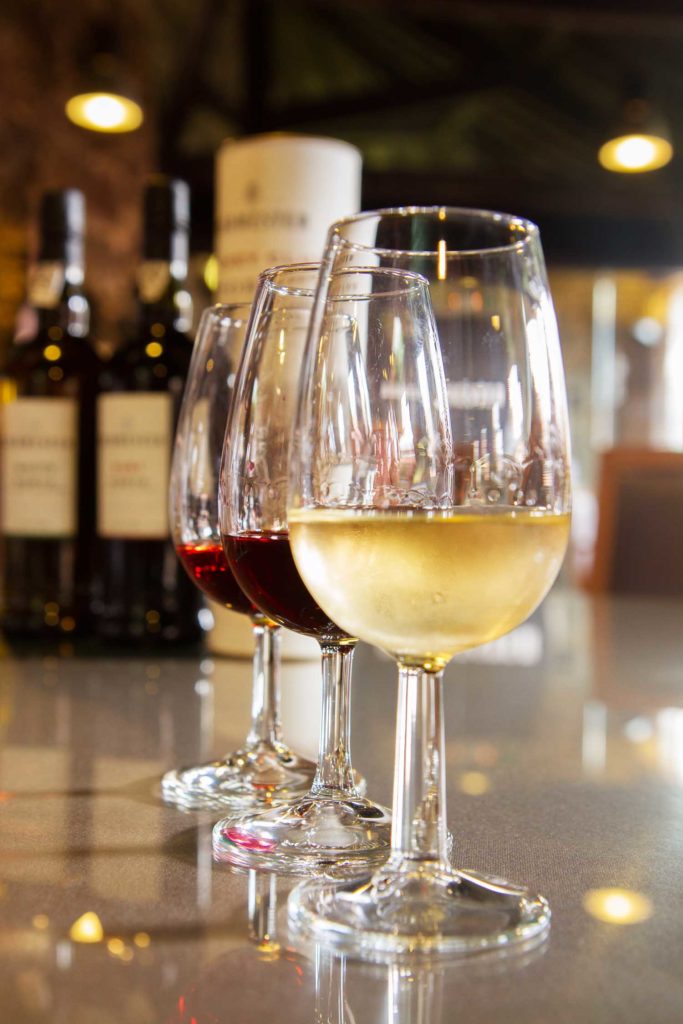
What is Port Wine?
Port is a traditional Portuguese wine, born and bred in the Douro Valley in the northern parts of Portugal.
What makes this wine so special is its unique blend of at least 52 varieties of indigenous grapes.
The fortified wine is produced with distilled grape spirits and comes in varying ages.
This ultimately delivers a delicious flavour, with a higher sugar level than most other wines.
The sweet, rich, flavoursome port is one of the most iconic Portuguese drinks and is served traditionally as a digestive and dessert wine.
While it’s easy to get your hands on an affordable bottle from your nearest supermarket.
There are some port wines that can cost hundreds of euros, like the more aged and rich Vintage port wine.






Where are Port Wines Produced?
The Douro Valley is made up of rocky soils on the hillsides, and a dry climate. The port grapes favour these unique conditions and warm, sunny weather.
The region also produces high-quality olives and almonds, which is why it’s now established as a protected area.
The three regions are divided into the Cima Corgo, the Douro Superior and the Baixo Corgo.
This allows the grapes to grow happily in all kinds of terrains and weather conditions.
An authentic port can only be produced in the Douro Valley region, so keep an eye out for phoney bottles.
Luckily, it’s not exclusively found in Portugal. You’d easily be able to find bottles of this sweet wine all around the world.
So you can always think back to your time in Portugal!
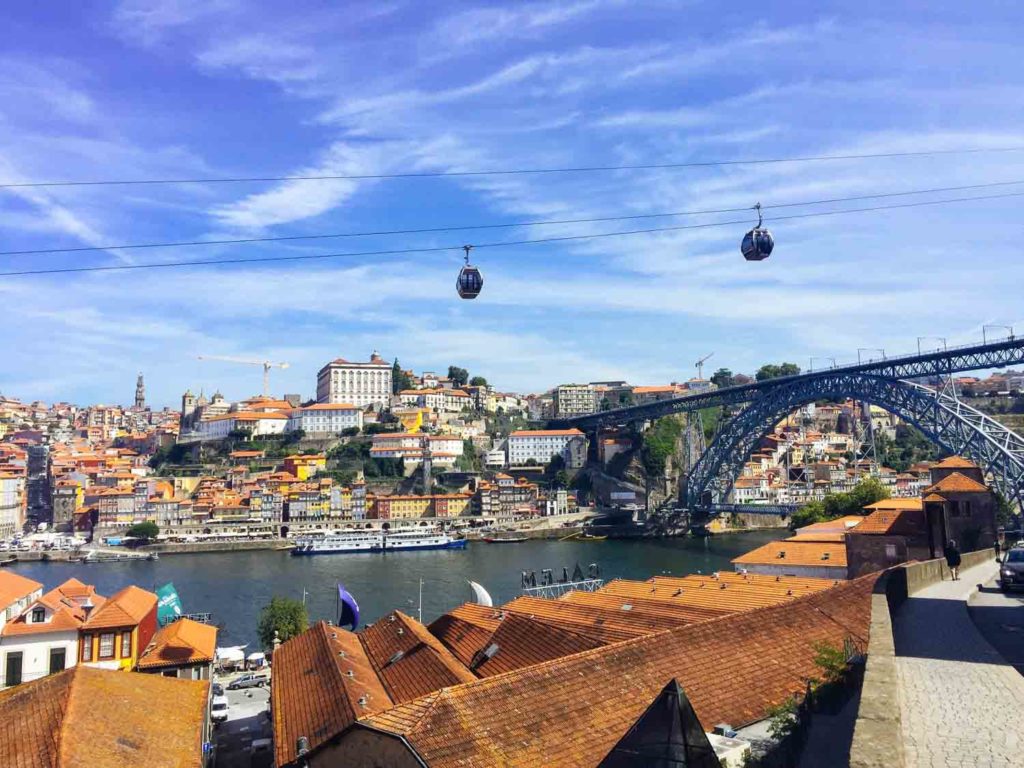
How is Port Wine Produced?
I’m sure many of us think the winemaking process of stomping grapes by foot is pretty old school. But this technique is still used to make port wine.
The beginning stages of production don’t differ much from standard winemaking.
Quality grapes are harvested, the juices are extracted and then the fermentation process begins!
Surprisingly, brandy is then added to the making, ultimately fortifying the wine.
This fermentation sucks out all the sugars from the grapes, which is where it gets its sweetness from.
It’ll take over a year and a half to really get the most out of the port. The young wine rests in oak casks, or in bottles.
It’ll then be added to another style of port, one that complements the flavours. It’s worth the wait.
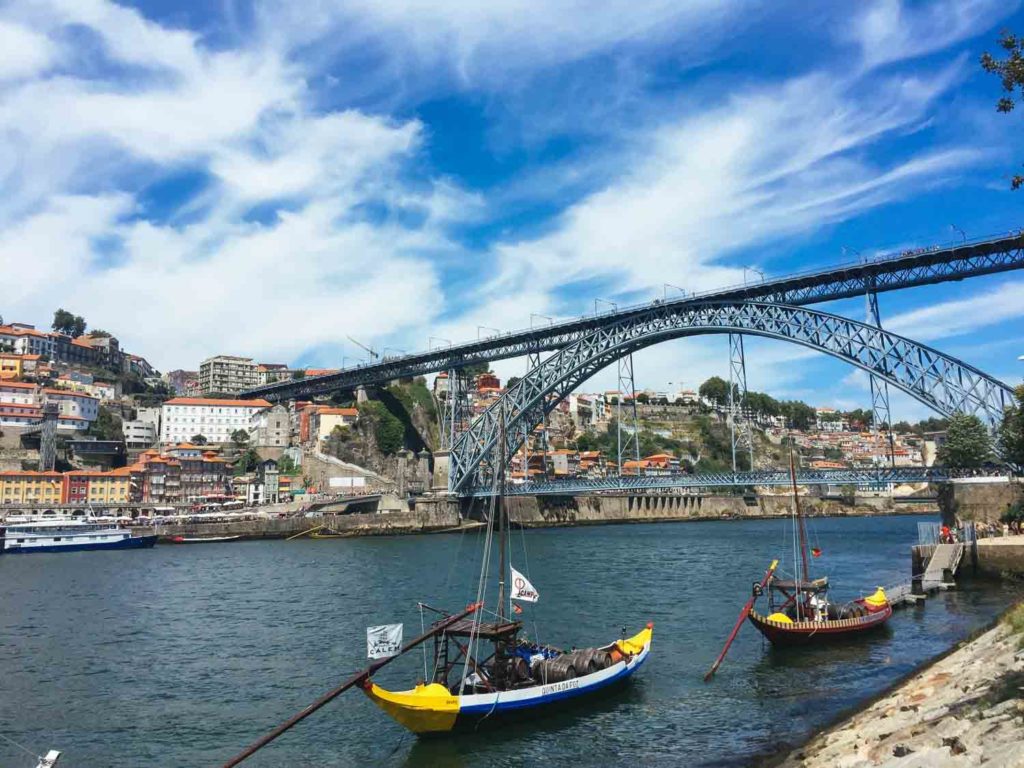
What Does Port Wine Taste Like?
As with a lot of Portuguese wine, you’d have to be a real connoisseur to identify the notes and flavours in the bottle.
But with port, it’s a lot easier to pick up these incredible tones.
The lack of acidity means it’s easier to taste the flavours and experience the delectable scent.
Some of the common tastes in port will remind you of chocolate, raspberries, blackberries, cinnamon, and caramel.
Two of the more popular varieties are tawny port and red port. The red port has less of a sweet taste and reveals berry and chocolate notes.
While the tawny, darker port has more of a nutty, caramel taste.
Both are delicious, it just comes down to personal preference.
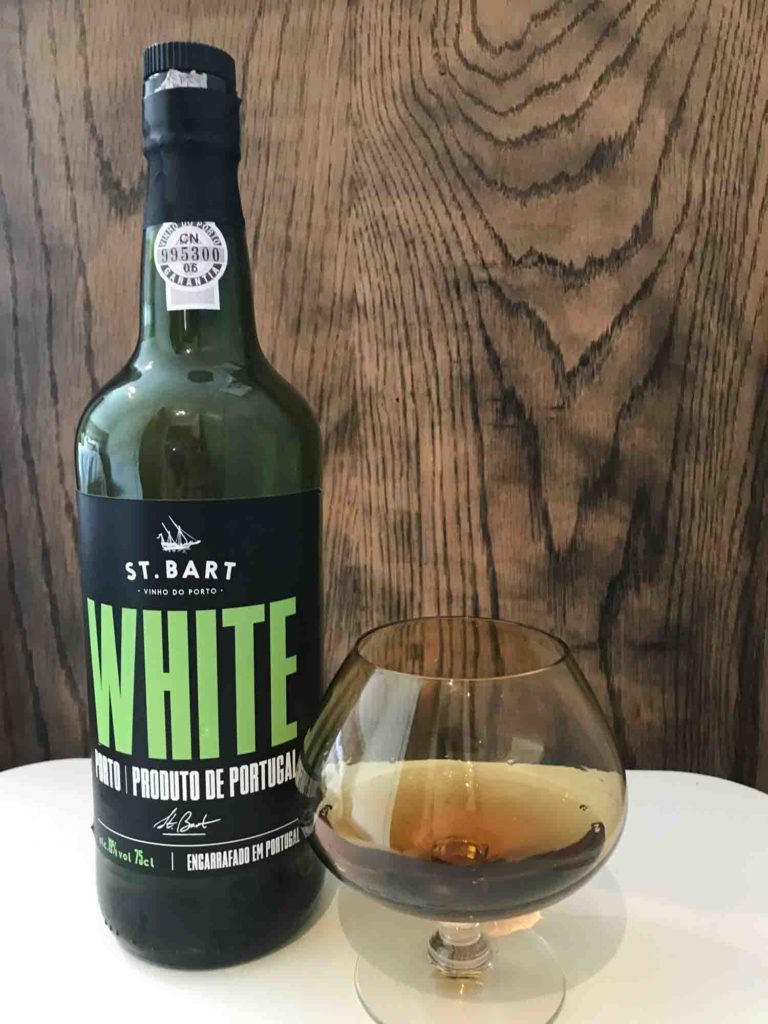
Types of Port Wine
Red and white grapes are harvested to produce this famous drink. These grapes can be completely altered, with storing and ageing, to bring out the best of their qualities.
- White: Made from white grapes, this port gives off brighter, lighter flavours. Think citrus, baked apples, apricots, and lightly toasted nutty combinations.
Tip: One of my favourite Portuguese drinks is a White Port Tonic, essentially a shot of White Port and Tonic served chilled. It’s brilliantly refreshing, especially on a hot Portuguese summers days.
- Rosé: This is one of the more recent styles of port. The port gets its sweetness from brown sugar and fresh berries, like raspberries, strawberries, and cranberries. And unlike other ports, it should be enjoyed ice cold.
- Ruby: A common and affordable style of port that’s deeply coloured. You’ll pick up a spiciness in this port, as well as a chocolatey taste and aroma mixed with delicious berries. Ruby port can also be vintage, stored for around 2-3 years.
- Tawny: Tawny port is bottle-aged, and can be stored up to 40 years. The wine gives off rich flavours from all the goodness of clove and fig, spices, dried fruits, and hazelnuts.
- Vintage: Vintage wine is barrelled from the best harvests of the year. The wine will be stored for around 2-3 years before being bottled. If you’ve got time to wait, it’s said that the absolute best of a vintage port is served after 20 to 40 years.
- Colheita: Colheita is also a vintage port and matured in wooden casks for around 7 years.
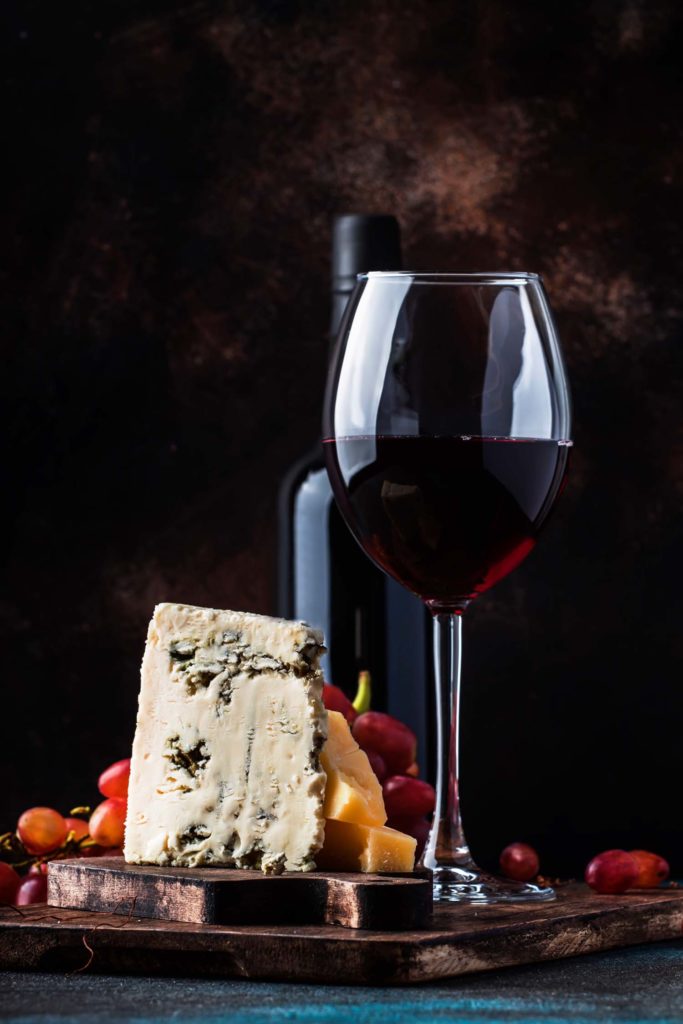
Port Wines Food Pairings
Great food pairing all comes down to what type of port you’re in the mood for.
Although all ports are sweet, it still varies with food pairings and you’ve got to find the perfect treat to complement your port.
Soft cheese like brie and camembert, cheesecakes, pies or milky treats can work well with your tawny port.
Dark chocolate truffles, fresh raspberries and fruit cakes are winners with ruby ports.
There are, however, some foods that go well with all kinds of ports.
They can enhance your experience and it’s lovely to enjoy these snacks with friends and a bottle of port!
- Cheese: the saltiness of the cheese and the sweetness of the port works wonders together.
- Chocolate cake: naturally, a dessert and dessert wine go perfectly together. You’ll experience all kinds of chocolatey, fruit flavours.
- Sorbet: if you’ve ever been to Portugal, you’ll know it gets pretty hot. Sorbet on the regular is a necessity, and when it’s paired with port, it’s even better.
- Pickles, olives and nuts: snacking on savoury delights contrast the deep, rich flavours of the port.
Serve your sweet wine in a port glass, also known as a small tulip glass, and get ready to enjoy.

Best Porto Wine Tours, Tastings and Experiences in Porto
While there are many great things to do in Porto, you can’t miss out on an authentic wine experience.
Full-Day Douro Wine Tour with Lunch and River Cruise
Take the opportunity to explore most of the Douro Valley on a day tour from Porto.
Not only will you stop at two fantastic wine farms, but you’ll also be sampling the best of their port.
Enjoy a typical Portuguese lunch, learn about port production, and embark on a 1-hour river cruise.
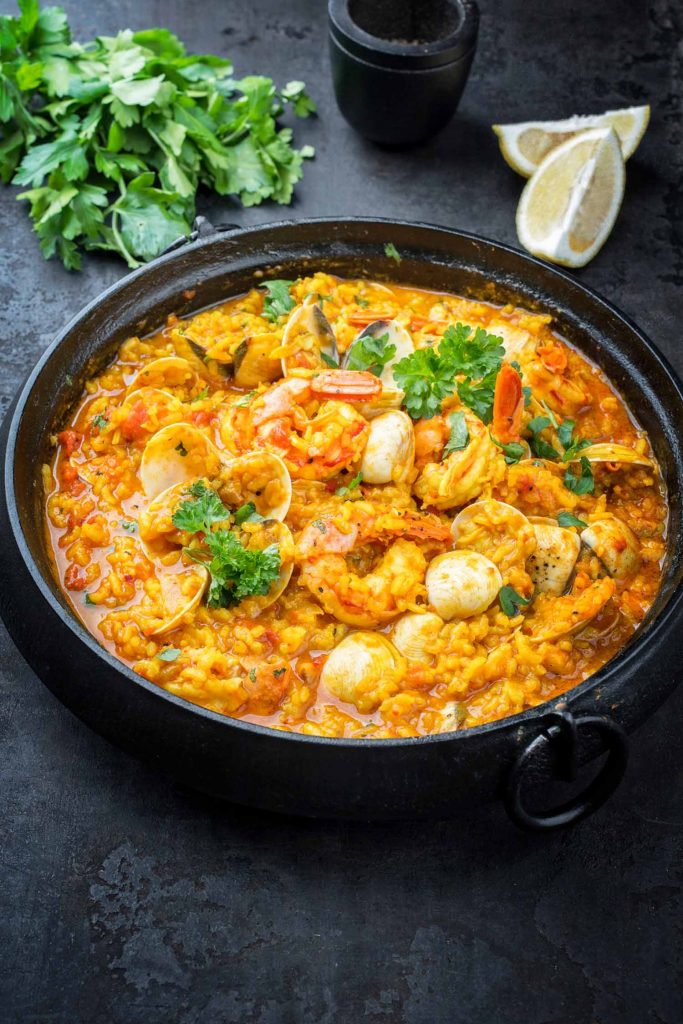
Cooking Classes with Port Wine
Port is a great addition to your cooking essentials. It works well in most rich and tasty desserts like chocolate sauces, cakes, and gooey puddings.
They can also be added to stews, short ribs, casseroles and even added to sauces to top steaks, potatoes, and fresh vegetables.
Attend a Portuguese cooking class that incorporates this beautiful port. You’ll have the gift of being able to prepare these dishes back home.
Porto: Hop-On Hop-Off Bus, River Cruise, & Port Cellar Tour
Discover the historic streets of Porto at your own pace, with a 2-day pass.
The pass grants you access to a 1-hour tour of Calém Port Wine cellars, a Douro River cruise, and a hop-on, hop-off sightseeing bus.
It’s the best way to indulge in the town’s history. You’ll simultaneously be gaining an understanding of the port, sampling local wines, and trying out the local cuisine.
Adorei saber mais sobre vinhos, parabéns pelo conteúdo, muito bom.